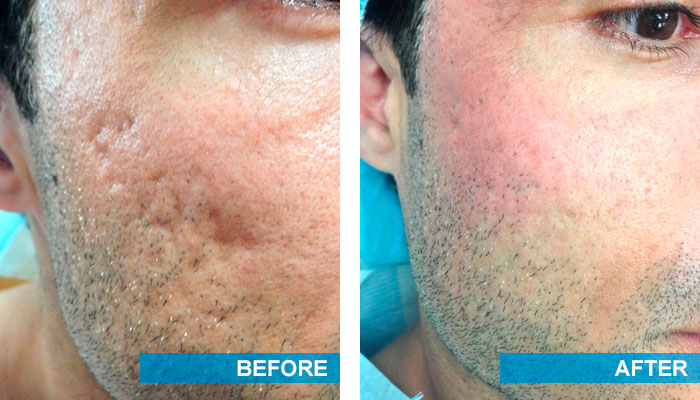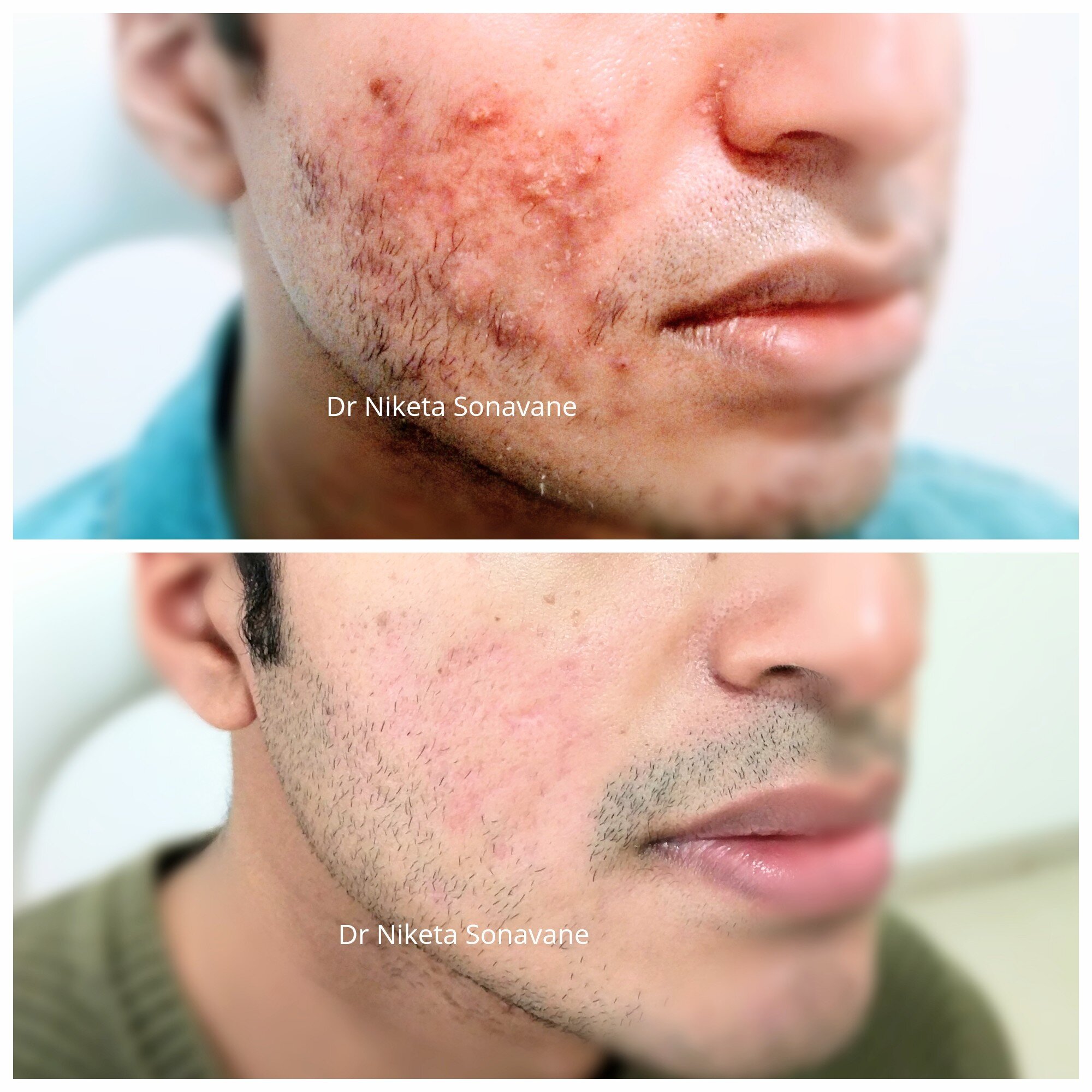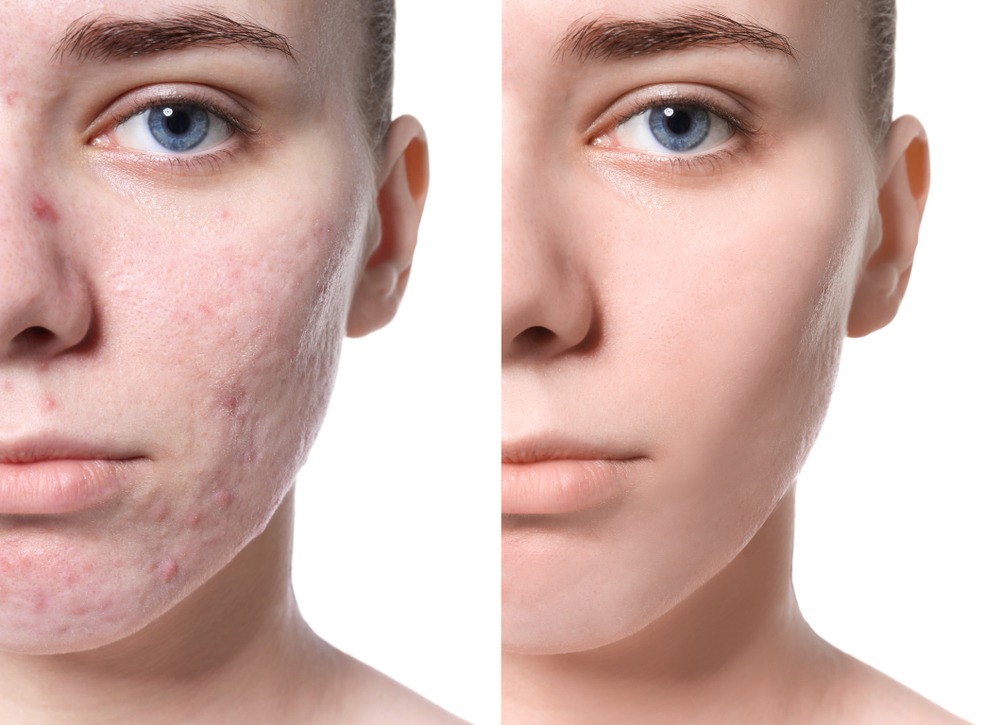Understanding the Various Skin Conditions and Effective Treatment Options for Acne Scars
Acne scars represent a complex interplay of skin problem that considerably effect people' self-confidence and general skin health and wellness. Recognizing the unique kinds of acne marks-- hypertrophic and atrophic-- together with their underlying causes, is critical for figuring out reliable therapy methods. Different restorative options exist, ranging from advanced skin-related treatments to all-natural remedies. The efficiency of these therapies commonly pivots on customized assessments by certified experts. As we check out the landscape of acne scar monitoring, it ends up being apparent that the journey towards clearer skin may involve greater than just topical solutions.
Kinds Of Acne Marks
The 2 primary categories of acne scars are atrophic and hypertrophic scars. These scars are more identified right into 3 subtypes: ice choice scars, which are narrow and deep; boxcar scars, which are larger and have well-defined edges; and rolling marks, which create a wave-like look due to uneven skin structure.
On the other hand, hypertrophic marks result from an overproduction of collagen during the healing procedure, leading to elevated locations on the skin. These marks are often firm and can vary in shade, in some cases showing up red or darker than the bordering skin.

Root Causes Of Acne Scarring
Scarring happens as an outcome of the body's all-natural healing reaction to inflammation and injury brought on by acne sores. When acne forms, it triggers an inflammatory feedback, causing the release of numerous cytokines and development elements that advertise recovery. This procedure can often lead to excessive cells formation or poor fixing, resulting in scars.
The key root causes of acne scarring include the intensity of the acne itself, duration of the sores, and individual skin kinds. Severe inflammatory acne, such as cysts and blemishes, is much more likely to cause scarring due to much deeper cells damage. In addition, improper handling of acne sores, such as picking or squeezing, can worsen tissue injury and swelling, increasing the probability of scarring.
Hereditary predisposition likewise plays a significant function; people with a family history of scarring go to a higher danger. Skin type and shade can affect mark formation, as darker skin tones may experience post-inflammatory hyperpigmentation, while lighter skin may create atrophic marks.

Treatment Alternatives for Scarring
Reliable treatment options for acne scarring vary depending upon the type and intensity of the marks. Normally categorized into atrophic, hypertrophic, and keloid scars, these conditions require customized strategies for optimum outcomes.
For atrophic marks, which are defined by a loss of tissue, treatments such as chemical peels, microdermabrasion, and laser therapy are commonly employed. These techniques promote skin revival and boost collagen manufacturing, consequently enhancing skin texture. Subcision, a minimally intrusive treatment, can likewise work by damaging up fibrous bands beneath the skin.
Keloid and hypertrophic scars can be more challenging to deal with. Alternatives include corticosteroid injections to minimize inflammation and squash the marks. acne scars. In many cases, cryotherapy or laser treatment may be suggested to reduce their look
Surgical alternatives are offered for severe scarring, where excision or skin grafting might be required. It's important for people to talk to a dermatologist to assess their certain scar kind and talk about one of the most appropriate therapy plan. Incorporating several therapies commonly yields the ideal results, making certain that each individual's unique skin disease is resolved efficiently.
Home Solutions and Natural Solutions
All-natural solutions and natural remedy can provide an obtainable method for people looking for to improve the look of acne marks. Different active ingredients discovered in the home cooking area have demonstrated prospective advantages in enhancing skin structure and find out here advertising recovery.
Using fresh aloe vera gel straight onto the marks can aid boost skin hydration and reduce redness. Honey Continued possesses natural antibacterial and moisturizing high qualities that can help in scar healing.
One more efficient choice is lemon juice, which functions as an all-natural exfoliant and can lighten hyperpigmentation. However, it must be made use of meticulously, as it might create photosensitivity. Oatmeal masks are also advantageous; their gentle exfoliation can aid get rid of dead skin cells while comforting irritability.
Necessary oils, such as tea tree oil and lavender oil, can additionally sustain scar healing as a result of their antimicrobial buildings. It is critical to execute a spot examination before using any kind of treatment to guarantee there are no adverse responses. These all-natural services can be a complementary strategy in the journey to diminish acne marks.
Stopping Future Scarring
Taking on an aggressive technique to skincare can considerably reduce the threat of developing future acne marks. One of the key approaches is to handle acne effectively as it arises (acne scars). This entails utilizing non-comedogenic skin care products and drugs recommended by skin doctors that target acne without irritating the skin. Normal cleansing, peeling, and hydration can help keep skin health and prevent clogged up pores.
Additionally, preventing the lure to pick or press acne sores is important, as this can bring about swelling and subsequent scarring. Instead, individuals must focus on applying topical therapies that advertise healing and decrease inflammation. Active ingredients such as salicylic acid, benzoyl peroxide, and retinoids are known for their effectiveness in handling acne and decreasing scars.

Finally, keeping a healthy diet rich in anti-oxidants and remaining hydrated supports skin regeneration. By applying these preventive steps, individuals can considerably decrease their threat of future scarring and promote overall skin health and wellness.
Final Thought
In verdict, a comprehensive understanding of acne scars, encompassing both hypertrophic and atrophic kinds, is crucial for reliable therapy strategies. Tailored treatments, including professional treatments and home remedies, can considerably enhance skin appearance and structure. Precautionary steps likewise play a critical duty in minimizing future scarring. Consultation with a dermatologist remains important to create individualized techniques that think about individual skin types and mark extent, inevitably improving the effectiveness of scar monitoring strategies.
Acne scars stand for a complex interaction of skin conditions that significantly effect individuals' self-worth and overall skin wellness. The two key groups of acne marks are atrophic and hypertrophic scars. These marks are further classified right into 3 subtypes: ice pick marks, which are deep and narrow; boxcar scars, which are broader and have well-defined sides; and rolling scars, which produce a wave-like appearance due to unequal skin appearance.
A complete assessment with a skin doctor can help figure out the most appropriate intervention, taking right into account the individual's skin type, mark severity, and general skin health.
Examination with a skin doctor remains critical to develop individualized approaches that think about private skin kinds and scar seriousness, eventually boosting the efficacy of scar administration strategies.